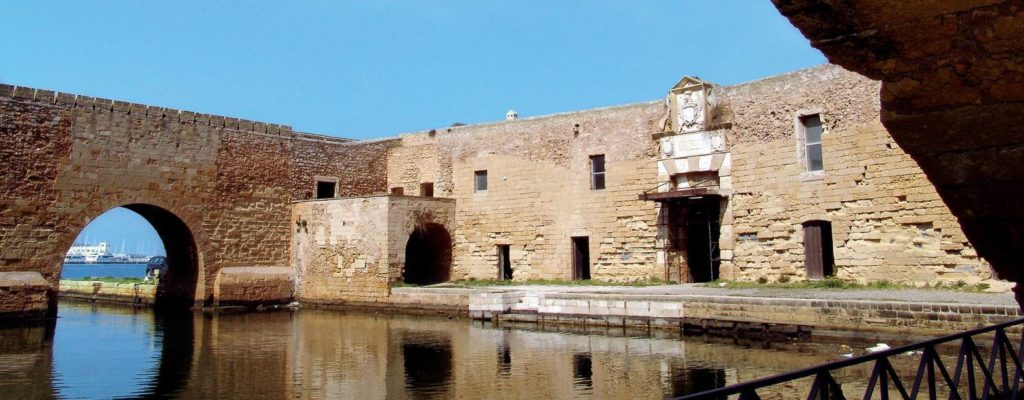La provincia di Brindisi ha al suo vertice una corona di possenti castelli e sontuose dimore. Torri, baluardi, fortezze erette a scopo difensivo ma anche eleganti manieri a cui era affidato il compito di affermare ed enfatizzare il potere del dominatore di turno. Federico II, Puer Apuliae, ha impresso il segno del suo carisma a Brindisi nel poderoso castello fatto costruire nel 1227 sulle coste del seno di ponente. Fu Ferdinando I d’Aragona a recingere la fortezza di mura con quattro torrioni cilindrici e, successivamente, Carlo V dispose ulteriori ampliamenti. Il castello “Rosso” o Alfonsino fu voluto nel XV secolo da Alfonso d’Aragona nel porto esterno, sul luogo dove sorgeva l’antica abbazia di Sant’Andrea.
Castles and luxurious dwellings
The province of Brindisi has at its peak a number of majestic castles and luxurious dwellings. Towers, bulwarks, fortresses built for defence but also elegant castles which were made to emphasize and affirm the power of the ancient rulers. Frederick II, Puer Apuliae, has left his charismatic sign in Brindisi at the mighty castle he had built in 1227 on the coast. Then Ferdinand I of Aragon surrounded the fortress with a wall with four cylindrical towers and Carlos V added other buildings. The “Red” castle or “Alfonsino” castle was erected in the 15th century by Alfonso of Aragon on the external port, where the ancient abbey of St. Andrea was.
Castello di Mare
La pietra di costruzione conferisce al forte un esclusivo colore fulvo al tramonto e venne ricavata dalla stessa isola ove la rocca sorge. La costruzione assume forma triangolare con quattro bastioni. Nel 1779 il castello venne attaccato dal vascello francese “Il Generoso”, che con le sue artiglierie smantellò una parte del forte e, nonostante la generosa resistenza, l’intera guarnigione cadde in mano ai francesi.
Castle ove the sea
The type of stone used for the construction of the fort, which gives it a unique reddish colour at sunset, comes from the same island on which the fortress stands. The construction has triangular shape with four bastions. In 1779 the castle was attacked by the French ship “The Generous”, which destroyed a part of the fort with its artillery and, despite generous resistance, the whole garrison fell to the French.

